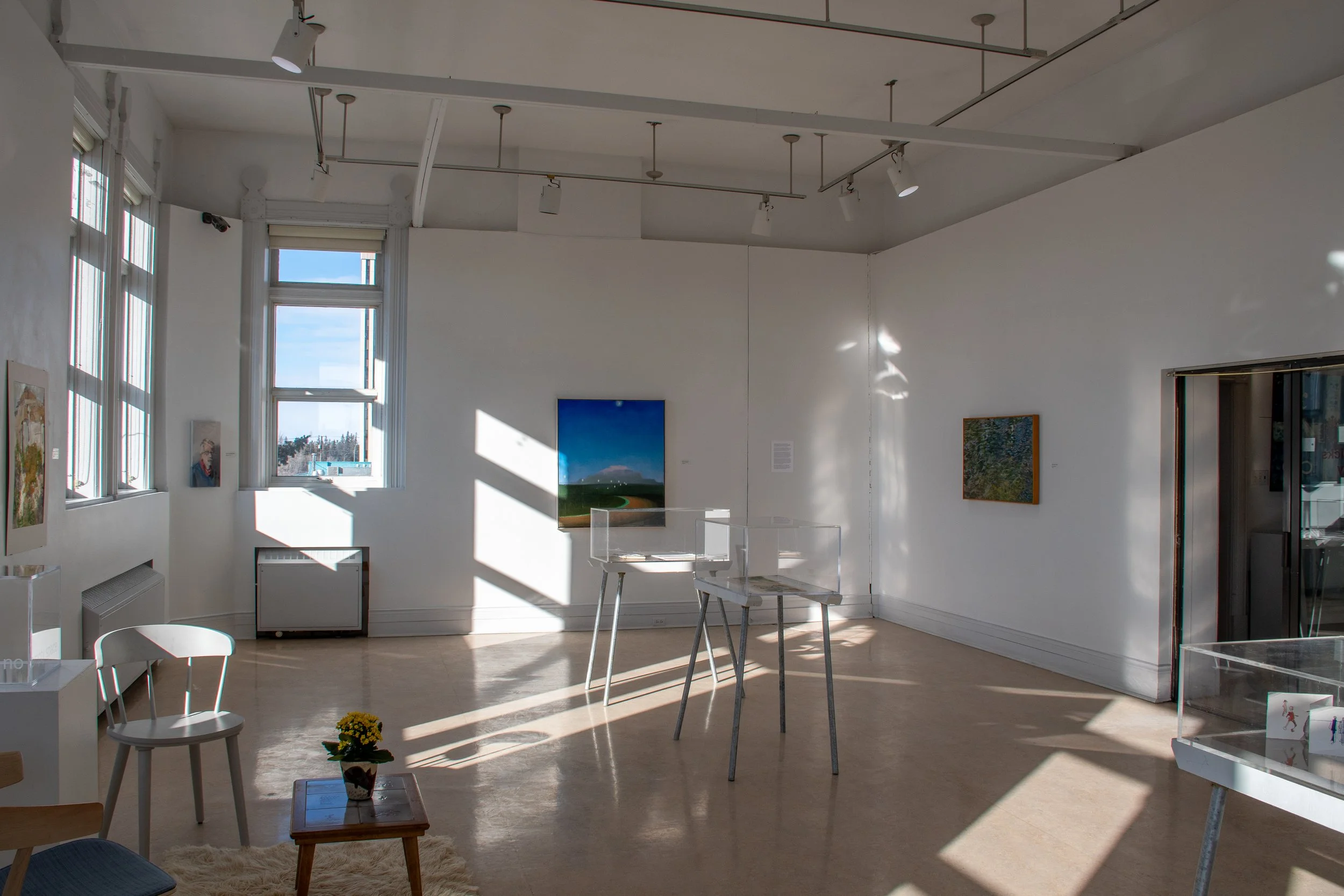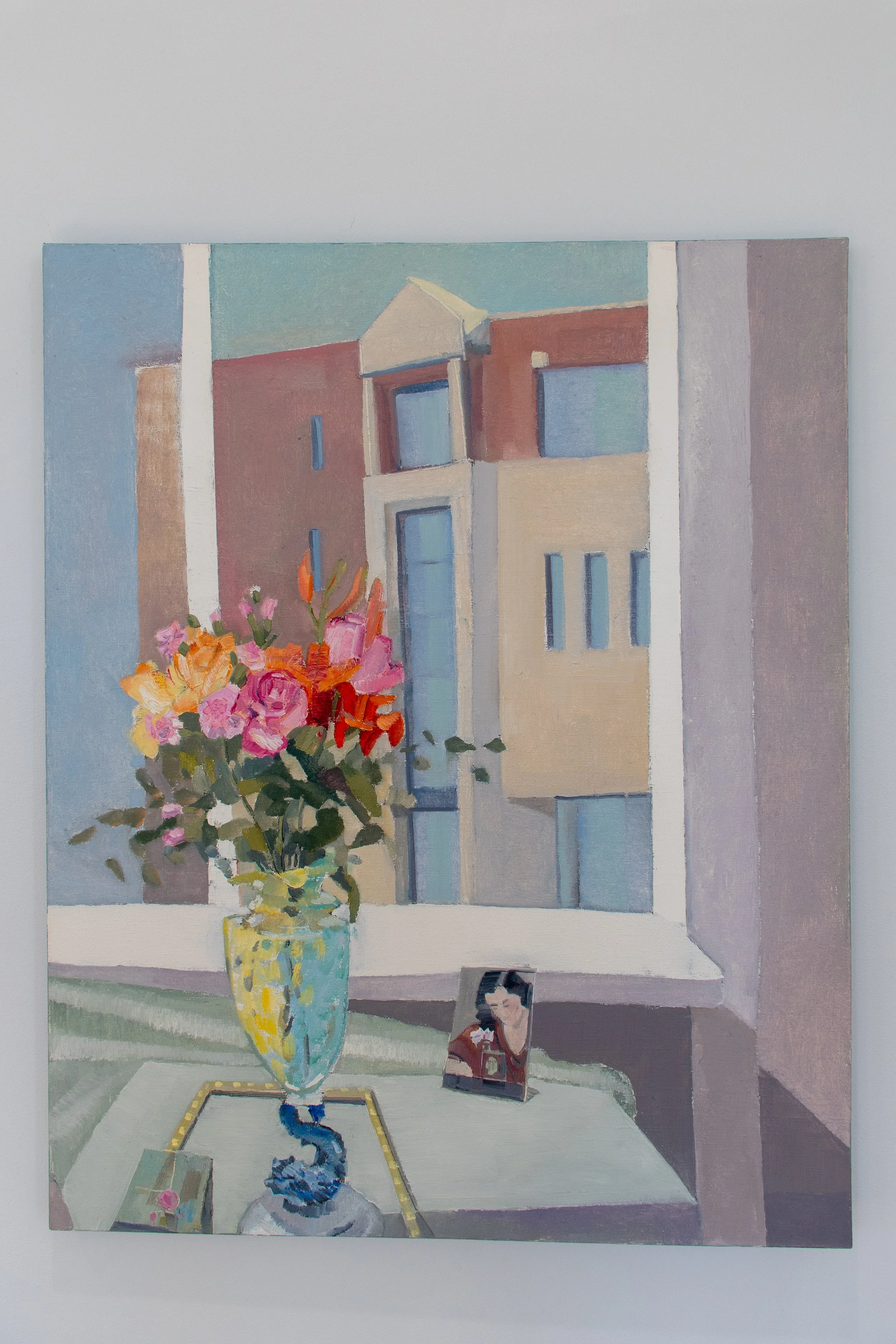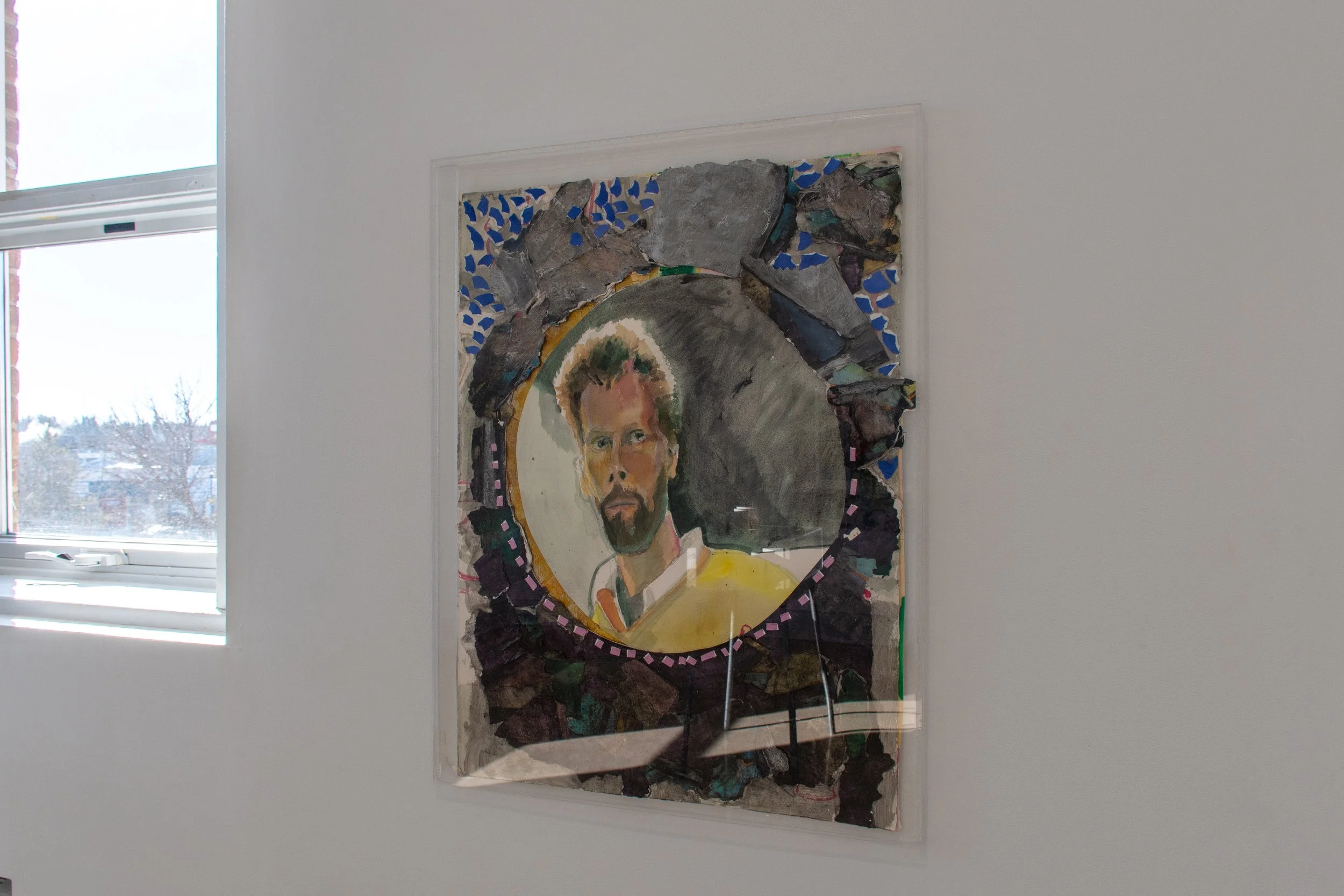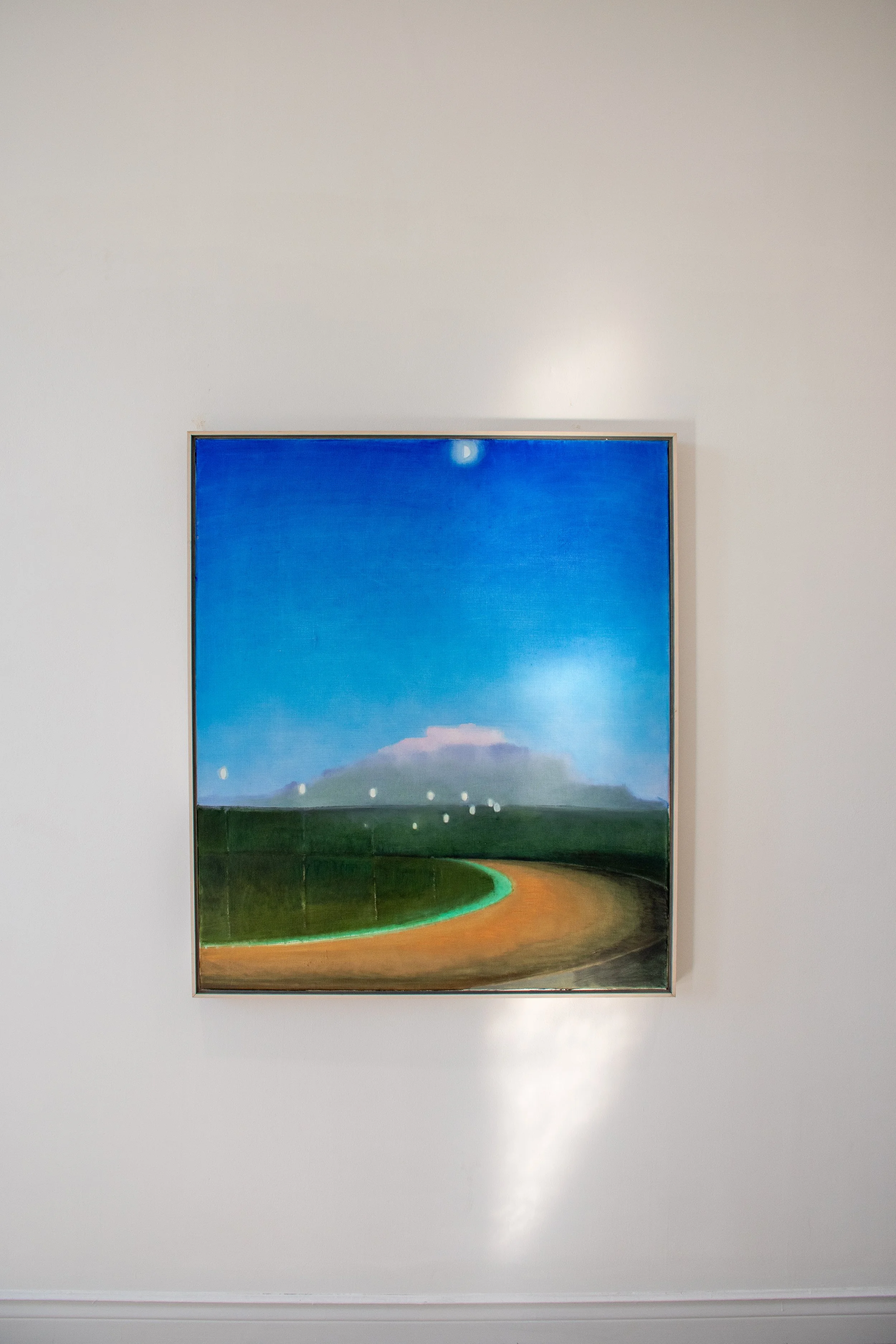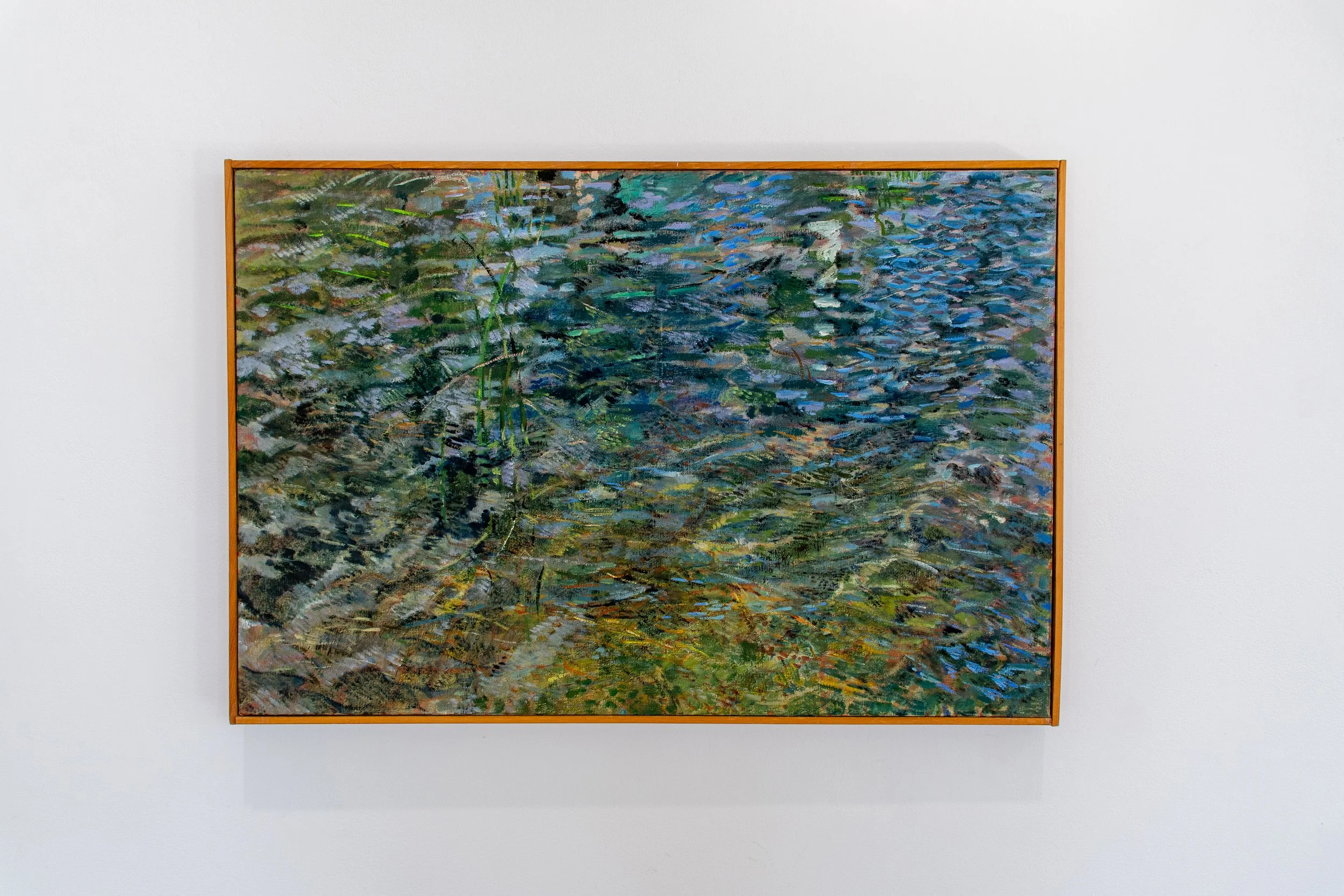Week 2: Spaces & Places
George’s paintings and drawings stem predominantly from familiar, representational imagery. The idea of observing ordinary surroundings suggests that his works are about places, people, and events in his life. In this installation, the works trace different settings from the 1970s to the early 2000s.
A painting created at Emma Lake from 1978 shows an impressionist-style depiction of ripples and movement through water. Particularity of place is present in Uzes: Place aux Herbes (November 1979). In this piece, details recall the atmosphere of public squares and the topography seen from the apartment that George and his family lived in during their year in France.
Later works contain an expansion of space. Fall Kitchen (1992) is positioned within the interior of George and Connie’s house in Prince Albert, but the piece is composed largely of trees seen from the north-facing kitchen window. The dance between indoor and outdoor, between the natural world and manmade objects, comes to define a personal perception. This idea is widened in Marquis Downs (1990), where the late summer atmosphere of a once-busy track recalls George’s interest in horse racing. Both paintings underscore the concept that a landscape does not exist in its own right, but it does exist within a person’s own awareness.
Although other artworks involve identifiable places, the incorporation of interior objects makes the paintings about relationships. For example, in Venetian Vase with Two Postcards (2004) and North Saskatchewan River: Fluorescent Yellow-Green (spring 2009), vases, flowers, and postcards are positioned before views to City Hall and a proposed nuclear plant in Prince Albert, respectively. The co-existence of domestic objects with symbols of political decision-makers constructs new arenas of thinking. They stem from his thoughts and questions about the information he receives through the media, at home, in his own space.
On one hand, artworks are about their makers. Identifiable imagery leads us to regard representations of people, places, and objects as biographical facts. However, the artwork is a moment that exists on its own. It arises from the artist’s gaze, their cultural experience, their practiced mark making, and emerges through the processes of observation and contemplation, formed over time into materiality. The artwork comes to be an event in and of itself.
Jesse Campbell, Curator
George Glenn, "Self-portrait #25" and "Self-portrait #24," 2002, oil on canvas, 20 x 10"
George Glenn, "Venetian Vase with Two Postcards," 2004, oil on canvas, 40 x 32"
George Glenn, "Time and Memory: Script," 1990, acrylic on paper with plastic insert, 22 x 29"
George Glenn, "Fall Kitchen," 1992, oil on canvas, 35 x 54"
George Glenn, "Self Portrait Montage," 1989, acrylic on paper in plexiglass sleeve, 30 x 23"
George Glenn, "Uzes - Place aux Herbes," 1979, gouache on paper, 24 x 18"
George Glenn, "Self Portrait #27," 2002, oil on canvas, 12 x 6"
George Glenn, "Marquis Downs," 1991, oil on canvas, 42 x 36"
George Glenn, "Emma Lake - Water," 1978, oil on board, 24 x 36"




